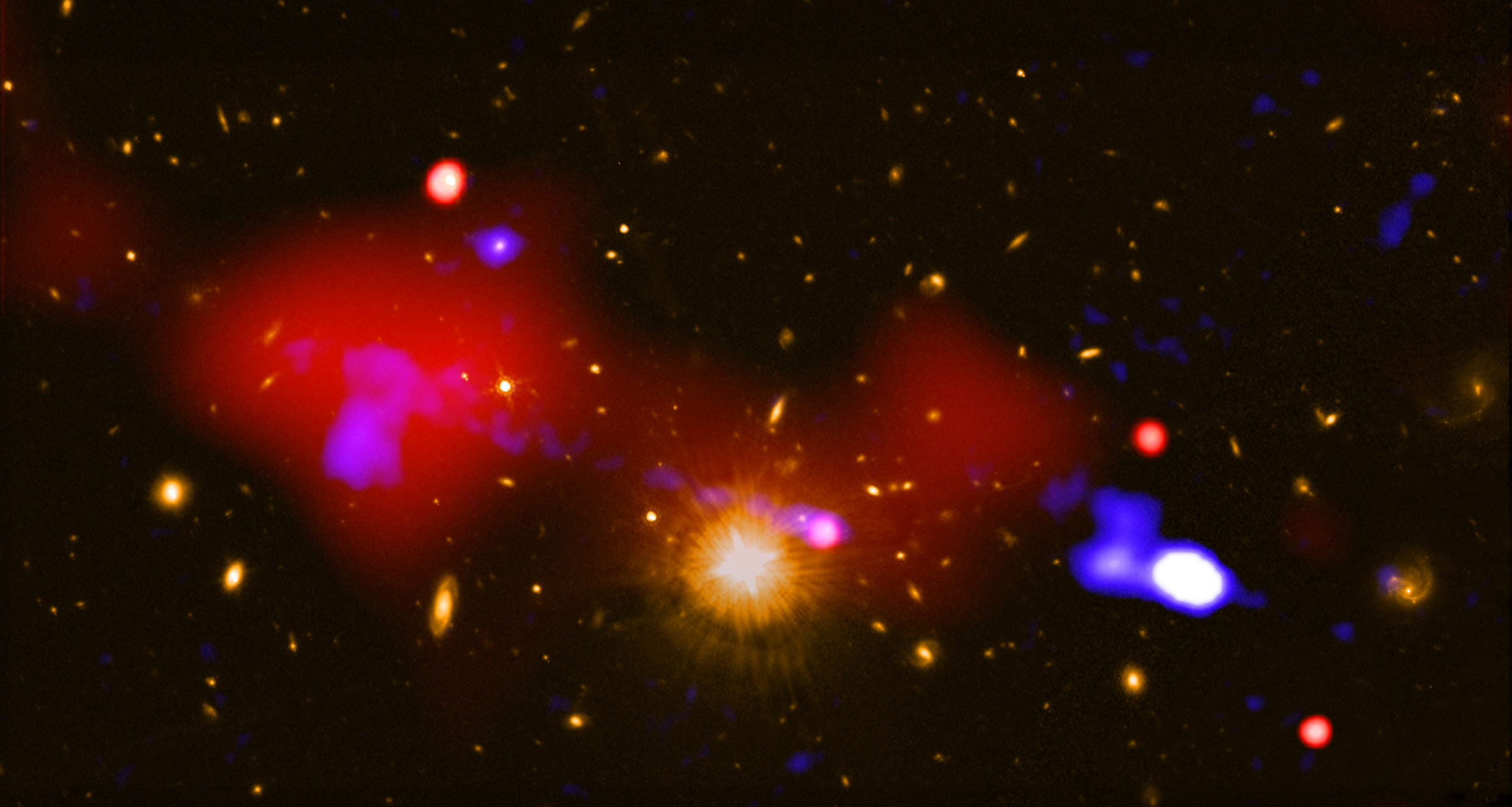
All beings, great and small, have their ways of finding balance. The sun regulates the rate of nuclear reactions; cells adjust the metabolism to meet changing needs. Mammals maintain their favored body temperature. And the ways in which temperature can be controlled by ecosystems are mind boggling!
Existing is a big deal. And existing permanently is huge. Even for something as tiny as the atomic nucleus.
The nucleus consists of two types of particles: neutrons and protons. They are held together by nuclear forces. However, not all combinations of neutrons and protons will form a stable nucleus. Most either fall apart quickly or have no chance of existing at all. Anyway, one thing at a time.
A single proton—a particle with a positive electric charge—exists permanently, and independently constitutes a hydrogen nucleus. But a single neutron—devoid of electric charge—is an ephemeron that survives for about fifteen minutes before breaking apart. Two protons cannot be paired, nor do two neutrons stick together. The only stable pair is a proton plus a neutron. When it comes to trios, only two protons and a neutron have a chance of surviving together long-term. Three protons is absurd, three neutrons a whim of the imagination, and two neutrons plus one proton last about twelve years and four months (statistically, this is a half-life).
As for the quartets, only one is stable: two neutrons plus two protons. The other four combinations are either impossible to realize or fall apart in the blink of an eye. As more neutrons and protons (or nucleons, as they are collectively called) are added, increasingly impossible or volatile configurations emerge. The stable and trustworthy among them become ever rarer exceptions.
When the number of protons is represented on the horizontal axis and the number of neutrons on the vertical axis, the domain of existing combinations is designated by a thin, diagonal, slightly curved line. Just below and above this curve are the regions of radiation and decay—places from which the atom wants to return as soon as possible to the narrow, safe path, to a state of equilibrium. Yet further above and below lie the vacant, white patches of impossibility and non-existence.
Forces and Prohibitions
Why are stable combinations of neutrons and protons so rare? Firstly, it must be noted that the structure of atomic nuclei is very hard to study. There are no clear, unshakable principles from which everything involving nucleons can easily be deduced. Instead, the results of empirical research—sometimes surprising—are expressed as neatly as possible in mathematical formulas and general laws. The nuclear forces acting between the nucleons hold the atomic nucleus together—this much is known. But far from being a pure attraction, at the closest possible distance, these forces have a decidedly repulsive effect. They therefore direct the nucleons to stay close, but not too close. In addition, the Pauli exclusion principle functioning within the nucleus essentially prohibits two identical particles from being in the same quantum state.
In the nucleus, there is also the usual electrostatic repulsion between the protons, or positively charged particles. At short distances, however, this is much weaker than the nuclear force. It only starts to matter at slightly greater distances. This is why the ratio between neutrons and protons is different in small and large atoms. Meanwhile, electrons in nearer and farther orbits are of little importance for the stability of the atomic nucleus. It’s a bit like the solar system: the sun doesn’t care about its beautiful, colorful planets. And it’s worth adding that the atomic nucleus strives to maintain the lowest possible energy. If for some reason the energy increases, the nucleus soon begins to suffer; it won’t tolerate the state for long. It gets rid of the irksome excess by radiating out a particle of some kind, or even breaking down.
Avenue of the Stars
But let’s take a break from the subatomic world and look up at the stars. To the naked eye, the two are quite similar, but closer inspection reveals that they differ significantly. Stars can have different colors: from red to orange, yellow, white, and blue; just like a heated steel bar, the colder the color, the higher the temperature. Furthermore, the intensity of a star’s glow is related to its size (of course, taking into account the distance from the observer).
If these features are combined—color (temperature) on the horizontal axis and size on the vertical axis—about 90 percent of the stars form a line on the graph, quite thick and irregular, but clearly defined. This curve leads from small red stars, through slightly larger orange and yellow stars (such as the sun), to even larger, white ones, and finally to blue ones, huge and bright. Astronomers call this line the “main sequence.” The graph can also reveal how long a star will live. The big, blue-hot ones have the greatest fuel supply, but they waste it the fastest: a giant with a mass twenty times that of the sun will burn out in ten million years, which is just the blink of an eye on the cosmic scale. On the other side of the spectrum are the red dwarfs, which are abundant in the universe. They use their scarce resources sparingly,
Between these extremes lie medium stars like the sun. And all of them—from the smallest to the largest—maintain a constant temperature for most of their existence. A red dwarf will never come to the conclusion that it will only live once, so it might as well burn fast; nor will a blue giant suddenly switch to the slow lane. Each star consistently follows its path and behaves like the other stars of its size.
Energy From Matter
The stars are stable due to a mechanism called hydrostatic equilibrium. In order to understand what this is, it helps to take a brief look into the belly of the sun (using the scholarly imagination, of course). In the solar core, hydrogen nuclei (protons) combine to form helium nuclei. This happens in stages: first, two protons bond with each other, and in order to make the pair stable, one of them must change into a neutron (emitting two tiny particles in doing so, a positron and a neutrino; this is called beta -plus decay). Another proton joins this pair, creating a trio: a neutron and two protons. Then two such trios combine, and since they lose two protons in the process, they become a quartet: two protons and two neutrons, ie, a helium nucleus.
The most noteworthy thing about this reaction is that the helium nucleus is 0.7% lighter than the four protons from which it was formed. The released mass is converted into energy, according to the formula E = mc². This thermonuclear fusion, as the process is called, is driven by the powerful gravitational force within the sun, which brings the protons very close together, overcoming their electrostatic repulsion. As a result, the nuclear forces described above can begin to operate.
The fusion taking place in the core of the sun creates pressure that almost threatens to blast the star apart from the inside. At the same time, however, due to gravity, the outer layers press against the core with the same force. This is hydrostatic equilibrium. Now imagine that the reactions in the core slowed down: the pressure exerted on the outer layers would be weaker and the push of gravity would begin to prevail. The nucleus would contract, the particles would get closer to each other, and the fusion would gain momentum again. And vice versa. If the reactions accelerated, the pressure would begin to overcome gravity and the core would expand, which in turn would slow down the fusion. Thus, despite the extremely high temperature (twenty-seven million degrees Fahrenheit) and enormous pressure (250 billion atmospheres) prevailing in the core, and despite the unimaginable power (384 quadrillion watts) produced via the wild, unbridled processes that convert matter into energy, the sun is stable. It is true that as it ages, as the amount of helium in the star increases, it is getting hotter, but these changes are very slow—a few percent in the space of a billion years. On the scale of tens, hundreds, thousands, or millions of years, there are only minor fluctuations.
Life After Life
About 90% of the stars observed in the sky belong to the main sequence. As for the rest, they are former main sequence stars—stars that lost their hydrostatic equilibrium and changed form after burning all their hydrogen fuel. In their new form, which depends on the star’s original size, they find a new balance. Take the sun, for example—in five billion years, it will have burned all the hydrogen in its core and will begin to dim. Gravity will gain the upper hand over pressure and the core will collapse. Then a re-ignition will occur: the star will start burning helium. As a result, it will change beyond recognition, becoming between one hundred and two hundred times bigger, and one thousand times brighter. It will become a red giant and survive in this form for about seven hundred million years.
When the helium in the core is exhausted, the sun will enter another unstable era in which it will flare and fade on repeat. During these convulsions, it will shed a great deal of matter, which will form a nebula around it. The star itself will shrink and become a white dwarf, thus no longer a star, but a fiery stellar remnant. After a further billion years, it will be a black dwarf, a cold remnant. For now, however, the sun still has a reserve of hydrogen, which it is burning in a state of hydrostatic equilibrium. We should rejoice in this, for it enables the existence of life on earth.
Blush and Shiver
Life itself can also ensure its balance, through a process called homeostasis. After all, a single cell is a droplet surrounded by a membrane, a barrier that lets selected substances in and out. In this way, the cell can maintain a more or less constant environment in its interior, even if its surroundings change. It can also expel substances that will affect the external environment, or that it wants to offload.
Homeostasis is not as spectacular a phenomenon as the hydrostatic equilibrium of a star, but it is very sophisticated. The cell, like the sun, maintains the appropriate intensity of its metabolism, but it must be more flexible and adapt the rate of change to the current situation on an ongoing basis. Chemical reactions are accelerated by enzymes whose action is muffled or enhanced by specialized molecules: inhibitors and activators. The product of the reaction triggered by one enzyme activates another, and so on, again and again. Eventually, the whole process can come full circle. This means that the product of the last reaction acts as an inhibitor of the first enzyme in line, and perhaps the next several. So an abundance of the product automatically halts production.
This is what happens when the cell produces ATP—adenosine triphosphate, the universal energy carrier. It is produced from another molecule, ADP—adenosine diphosphate. The end result of this cellular toil, ATP, blocks the machinery that produces it in several places, thus avoiding overproduction. This is important because unused ATP decomposes (so the energy put into its synthesis would be wasted). But this is not the end; this decomposition leads to the formation of the ADP compound, which is not only the raw material of the process, but also an activator for several enzymes involved in the whole cycle. So the process is largely self-regulating—it restrains and stimulates itself as needed.
Larger homeostatic systems, such as body thermoregulation in birds and mammals, rely on similar feedback loops. The animal’s hypothalamus receives impulses from temperature-sensitive neurons extending through axons to the skin and internal organs. When information alerts the system to a state of cold, the appropriate reactions are automatically triggered: switching on the production of heat by brown fat (in humans, this wonderful tissue is present mainly right after birth; unfortunately, it all but disappears over time) , making the muscles shiver, and constricting the blood vessels. On the other hand, when it gets hot, the blood vessels are dilated (which is why we blush), and the body begins to evaporate water (humans sweat, dogs pant, and rodents cover their beautiful fur with saliva). The effects of all these procedures are, of course,
However, this is only the physiological, reflexive part of the process—both high and low temperatures (mainly of the skin) also trigger intentional behavior. The simplest response is to simply move to a warmer or cooler place. A more complex reaction, which takes into account possible future temperature fluctuations, is to build a nest, burrow, or other shelter that allows the animal to create its own microenvironment. Human activities, such as making and wearing clothes, or building houses and power plants, belong to the same type of behaviors, at least to some extent.
Sulfur Over the Water
But all of this pales in comparison to the method used by marine organisms to regulate their temperature using sulfur compounds. While this phenomenon may not be thoroughly understood, the findings are so far intriguing. In the air above the sea, there is a commonly occurring simple chemical compound: dimethyl sulfide, or DMS. It is this substance that gives the sea—especially near the shore—its characteristic sweet smell.
Higher up in the atmosphere, DMS breaks down into sulfate ions, which are involved in the formation of clouds. Lower down, in the deep sea, DMS is formed from another, slightly more complex sulfur compound, called DMSP for short. The latter substance is secreted into the water by algae called coccolithophores. Like other algae, the coccolithophores multiply more quickly the more sunlight reaches the ocean. And the better they thrive in the water, the more DMSP they release, which ultimately results in more clouds. The clouds block out the sun, so the population of coccolithophores dwindles—and so on. It works a bit like a giant thermostat.
However, as is usually the case in nature, things are more complex than one might suspect. As it turns out, DMSP can be produced not only by coccolithophores, but also by some heterotrophic bacteria. Furthermore, DMS is also formed from DMSP thanks to microorganisms: bacteria, fungi, and plant plankton. And to make things even more complicated, the whole system is not only local: the wind drives the clouds over the land, where the sulfur falls with the rain and is partly used by terrestrial organisms as a component of numerous amino acids and proteins. It is also washed back into the seas, and if it weren’t for the coccolithophores and other marine creatures, terrestrial organisms would quickly run out of it. Finally, the clouds formed from the sulfate ions cool the ocean directly below them,
As if that weren’t enough, none of the species participating in this pageant are operating with the intention of protecting the Earth from overheating; they are all using the sulfur for their own purposes. Marine organisms, for example—according to James Lovelock—utilize it to protect themselves from the salt present in the water. And they needn’t liaise especially well in order to regulate the temperature together, because from the beginning, earthly life has evolved as a whole. To put it another way, the sulfur cycle is both regulating the temperature and communicating on its behalf. Because in nature, unity of theory and practice is the norm.
However, clearly, this edit is not totally stable: the local and global processes of thermoregulation of the planet are increasingly being disrupted—not only because the average temperature is rising, but also because of the increasing acidification of the oceans, which affects the life of marine microorganisms. Humans are responsible for this. This may seem paradoxical, because Homo sapiens (and all their activities) are part of nature. Our greed and desire for limitless expansion may well be innate, but so is our intelligence, flexibility, compassion, and capacity for self-limitation. Who knows, maybe this is also some kind of balance mechanism?










